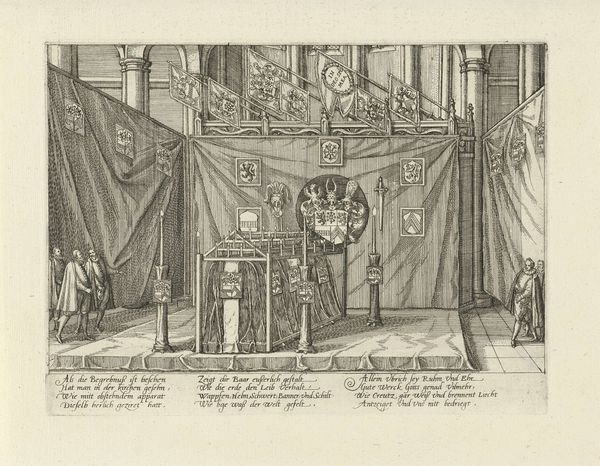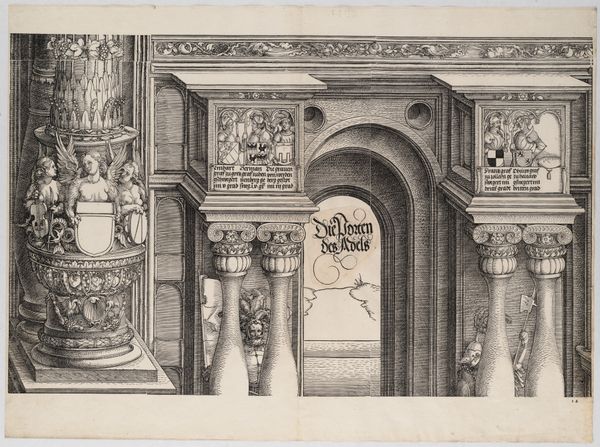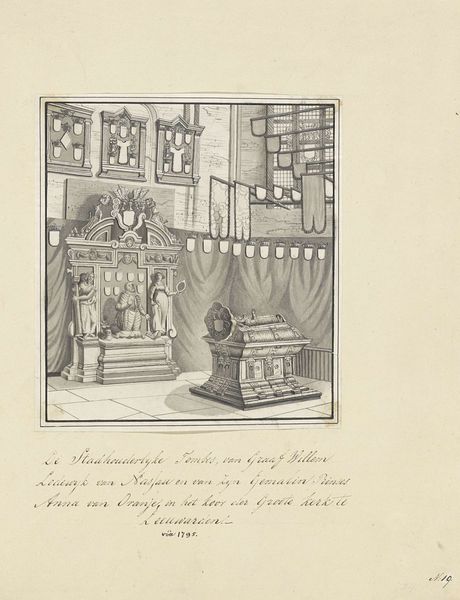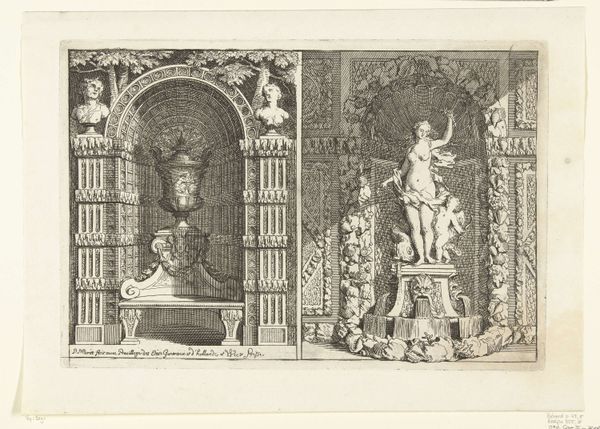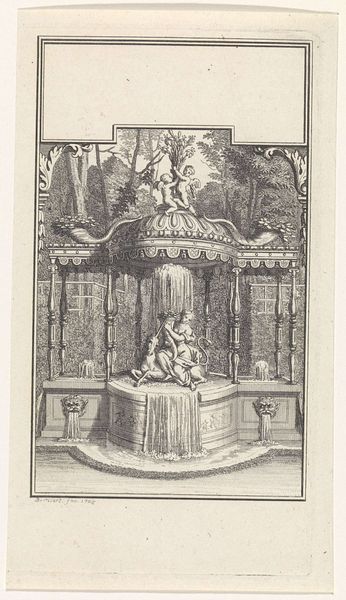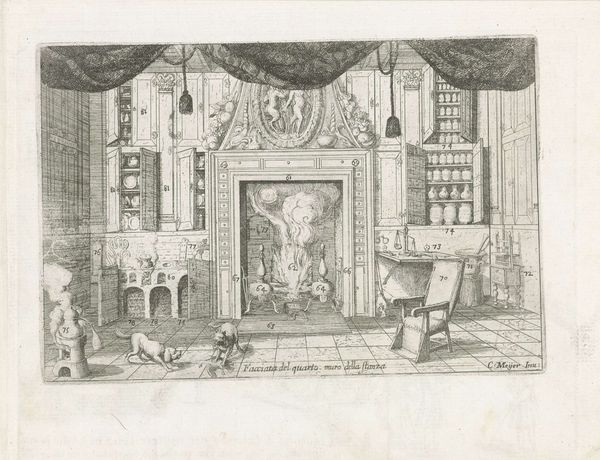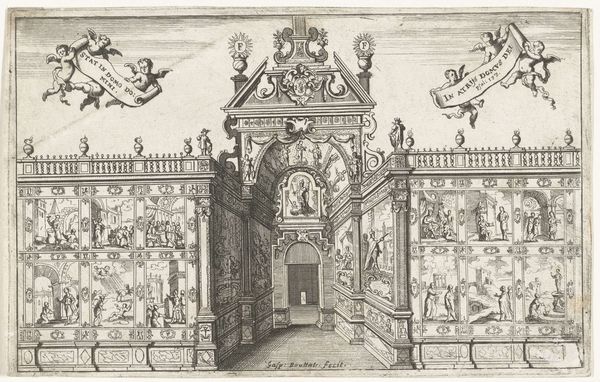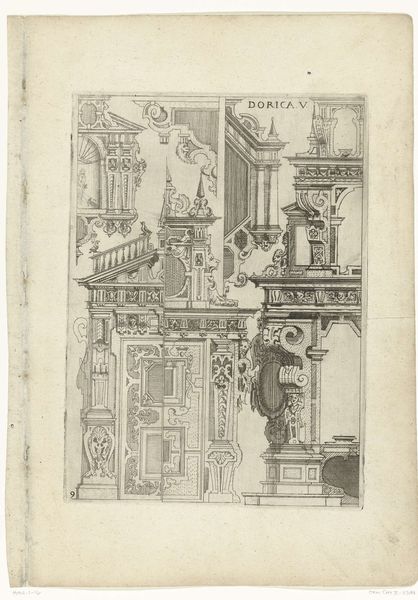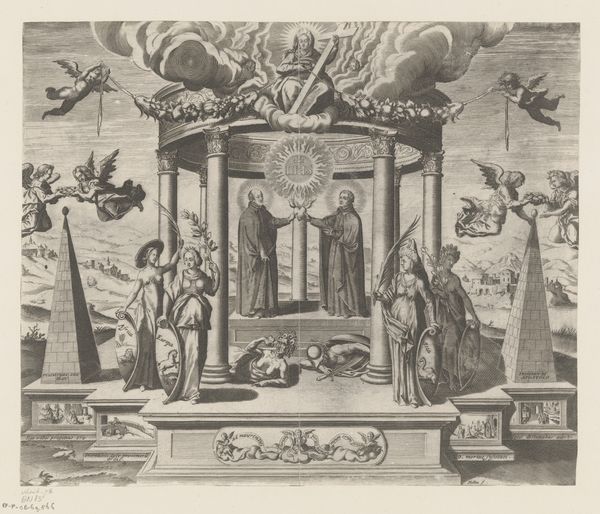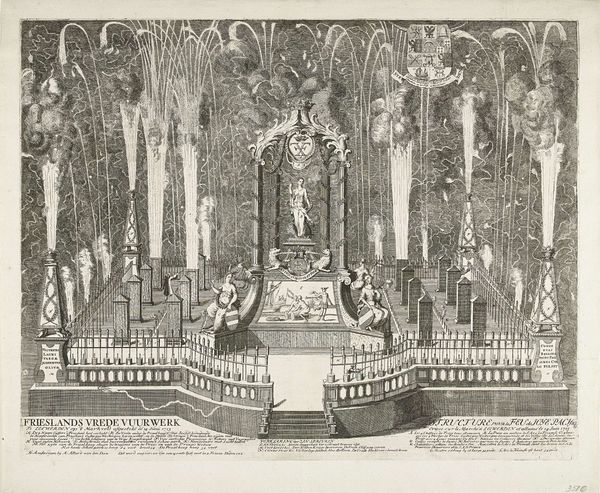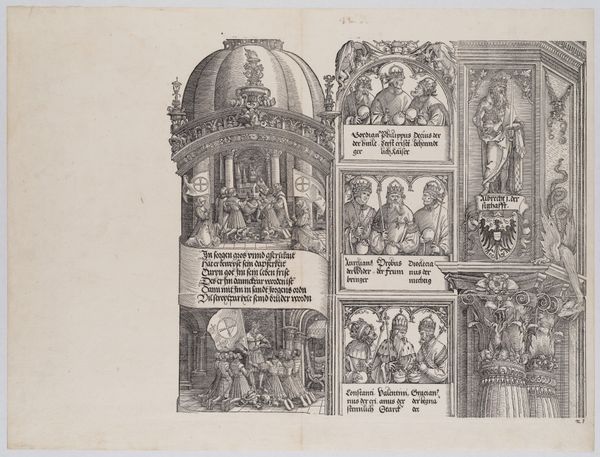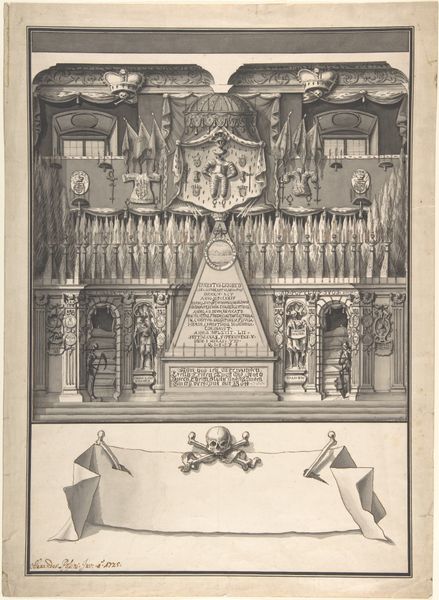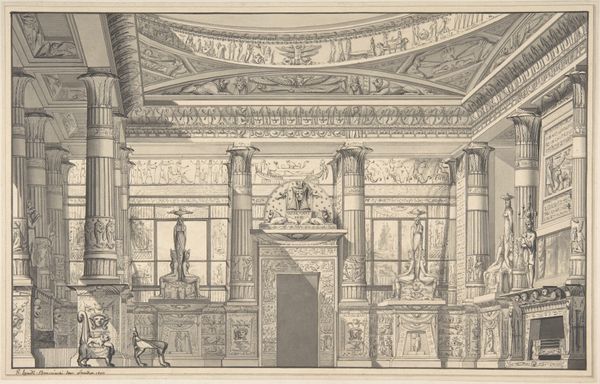
Portret van Ernst Casimir, zijn sneuvelen bij Roermond en het interieur van de Grote Kerk te Leeuwarden (plaat 1), 1633 1634
0:00
0:00
jhermans
Rijksmuseum
print, engraving
#
portrait
#
baroque
#
dutch-golden-age
# print
#
cityscape
#
history-painting
#
engraving
Dimensions: height 220 mm, width 485 mm
Copyright: Rijks Museum: Open Domain
J. Hermans made this print in 1633, depicting Ernst Casimir, his death at Roermond, and the interior of the Grote Kerk in Leeuwarden. The print encapsulates significant social and cultural themes prevalent in the Dutch Republic during the 17th century. We see not only the glorification of military leaders but also the important role of the church in commemorating important figures. The image creates meaning through visual codes associated with power, death, and remembrance. The portrait of Ernst Casimir, framed by allegorical figures and a skull, establishes him as a noble figure. The depiction of his death at Roermond connects him to military prowess, and the interior of the Grote Kerk highlights the institutionalization of his memory. During this time, the Dutch Republic was shaped by its struggle for independence, which influenced artistic production. Understanding this artwork requires delving into the history of the Dutch Republic, the role of military leaders in shaping national identity, and the ways in which institutions, like the church, contribute to the construction of collective memory.
Comments
No comments
Be the first to comment and join the conversation on the ultimate creative platform.
